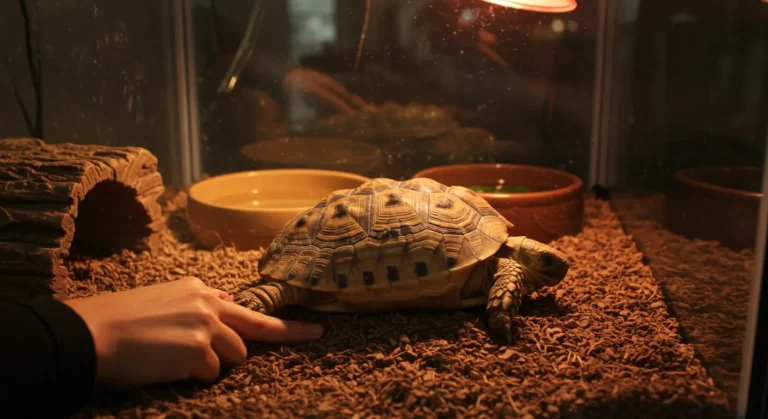🐢 How Do You Know If a Tortoise Is Dead?
Let’s be real — it’s terrifying when your tortoise stops moving. They’re slow creatures by nature, but when they really don’t react, it raises big questions. If you’re wondering how do you know if a tortoise is dead, you’re not alone. Many tortoise keepers, especially beginners in the UK, panic when their shelled friend appears lifeless — but it might not be what you think.
😴 Why Tortoises Sometimes Appear Dead
Tortoises are masters of the long nap. Sometimes, what looks like a tragic loss is just your pet going deep into brumation (their version of hibernation). During this period, they can become cold, still, and unresponsive — especially in colder climates like the UK.
But how do you tell the difference between deep rest and actual death?
🚨 7 Signs Your Tortoise Might Be Dead
1. No Reaction to Touch
A healthy tortoise, even while brumating, will usually flinch or move slightly when you gently touch its legs or head. If there’s zero reaction, that’s a red flag.
2. Cold, Rigid Body
Tortoises can feel cold during brumation, but stiffness (rigor mortis) is a sign of death. Try gently moving a limb—if it feels frozen in place and unnatural, be cautious.
3. Sunken Eyes
This is often a visible sign. Dry, sunken, or dull eyes that don’t respond to light or touch may indicate the tortoise has passed.
4. No Breathing or Heartbeat
Tortoises have slow breathing, but you should see slight chest movement or feel breath near their nostrils. No movement for several hours? Trouble. Some use a torch and a mirror near the nose to test for breath.
5. Rotten Odour
This one’s grim. A foul, decomposing smell coming from your tortoise is a likely indicator of death. A healthy tortoise should smell neutral or earthy.
6. Floppy Limbs or Shell Separation
If the limbs dangle limply or the shell starts separating from the body, this is a late-stage sign. Don’t wait to act at this point.
7. Discolouration of Skin or Shell
Darkening, spotting, or unusual shell discolouration may suggest decay has set in. Check especially around the tail and limbs.
❄️ Common Mistake: Hibernation vs Death
Inexperienced owners often mistake brumation for death. During colder months, tortoises enter a deep rest state. Here’s how to differentiate:
| Brumation (Hibernation) | Death |
|---|---|
| Cold but flexible body | Cold and rigid body |
| No foul smell | Decomposing odour present |
| Slow breathing (hard to detect) | No breathing at all |
| Eyes might stay closed | Eyes sunken or glazed |
| Tension in limbs if touched | Limbs limp or unnaturally stiff |
🧊 Important: Always assume brumation first unless obvious death signs are present. Use a reptile vet for confirmation.
🩺 How to Check Vital Signs in Tortoises
- Breathing Test: Place a mirror near the nose to check for condensation.
- Limb Reaction: Gently pinch a leg or tail — look for a twitch.
- Light Test: Shine a torch into the eye — a living tortoise’s pupil will react.
- Warm-Up Method: Place the tortoise in a warm, safe environment for 1–2 hours. A brumating tortoise may slowly wake up. A dead one will remain unchanged.
⚠️ If unsure, consult a reptile vet immediately.
🛠 What to Do If You Think Your Tortoise Is Dead
- Move the tortoise to a warm, quiet space.
- Try the vital signs checks listed above.
- Call an exotic pet vet or herpetologist.
- If confirmed deceased, handle respectfully:
- Bury in your garden (UK law allows this if not hazardous)
- Or contact a pet cremation service
🛡 Preventing Sudden Tortoise Death
- Monitor temperature in their enclosure — use heat lamps and thermometers.
- Avoid incorrect hibernation. Always follow proper brumation protocols.
- Provide UVB lighting for calcium absorption and bone health.
- Feed a balanced diet (not just lettuce!).
- Hydrate regularly — shallow water dishes are a must.
- Schedule annual checkups with a reptile vet.
Read More : How to Become a Vet Nurse in the UK: A Step-by-Step Guide
❓ FAQs
Q1: Can a tortoise sleep for days?
Yes! Especially during brumation. But if it’s unresponsive after warming, consult a vet.
Q2: Do tortoises breathe while hibernating?
Yes, but very slowly. One breath every few minutes is normal.
Q3: How long should I wait before panicking?
If your tortoise hasn’t moved for over 24–48 hours, especially in warm conditions, investigate immediately.
Q4: What’s the best way to warm a cold tortoise?
Use a heat mat or lamp, gradually warming them over an hour. Never use direct hot water or sunlight.
Q5: Can a vet revive a tortoise?
If caught early, yes — especially if it’s just dehydration or incorrect hibernation. But once the signs of decomposition begin, revival isn’t possible.
With that said, thank you for reading — and until next time, take care of your shelled sidekick 🐢❤️

